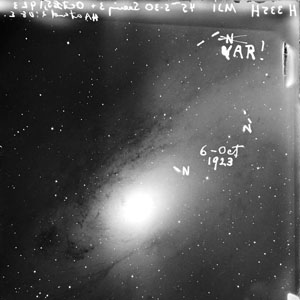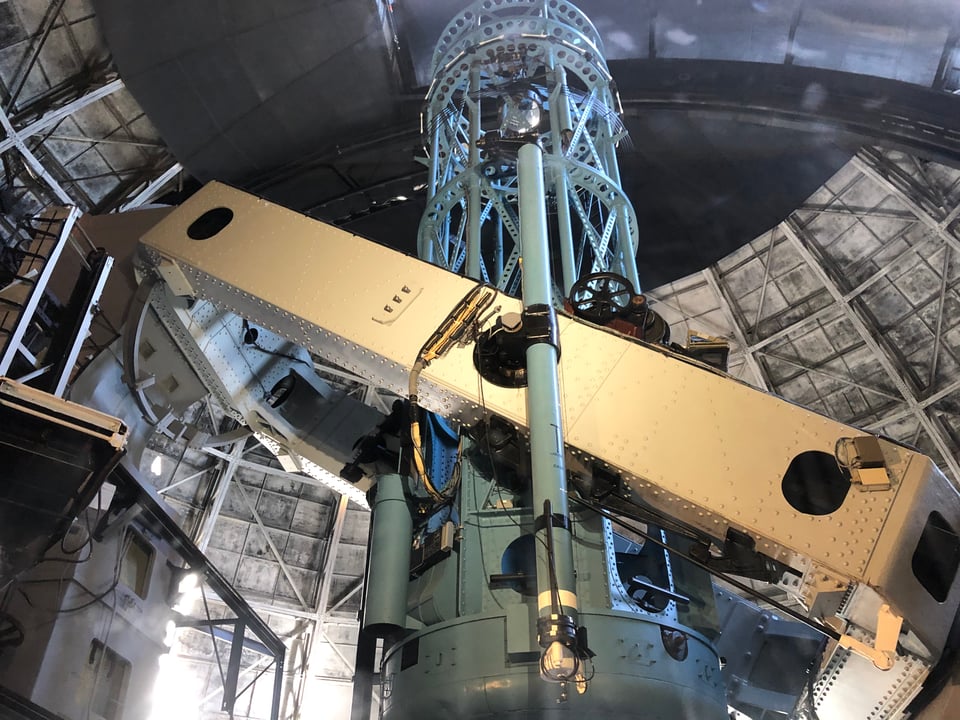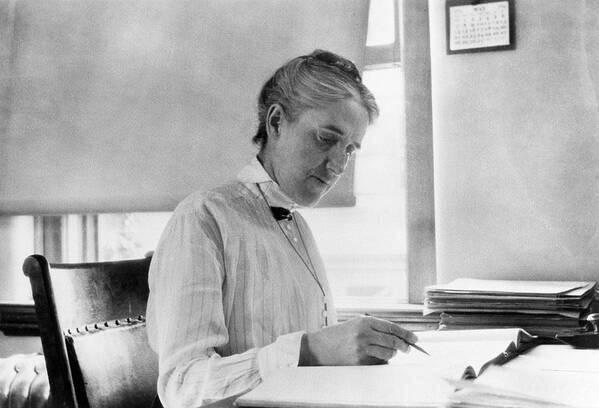Greetings, friends. On January 1, 1925, exactly a century ago yesterday, Edwin Hubble addressed the annual meeting of the American Astronomical Society to confirm the discovery of Cepheid variable stars in the Great Nebula in Andromeda. This announcement decisively demonstrated the existence of other galaxies beyond the Milky Way, and paved the way for our modern understanding of cosmology.
I still find it hard to believe that, in some sense, humanity’s most advanced conception of the true scale of the universe wasn’t even a century old until… yesterday. My grandfather was born into a world where even the most educated scientists weren’t certain that other galaxies existed. My paternal grandmother was only a few months old when Hubble’s bombshell settled a debate that had raged for years among the leading astronomers of the day: Just how big is our universe?
I am personally obsessed with this question. Not with the answer, I mean. I think, in this the year 2025 of the Common Era, that scientific consensus has a pretty good idea of the extent of the visible cosmos.
I mean that I am obsessed with the question. For as long as human beings have entertained abstract thought, some bright lad or lady out there has probably wanted to know: How big is the world? How far away are the sun, the moon, or the stars? Is there anything beyond them?
I guess, properly speaking, I am obsessed by humanity’s aching desire to answer these questions, and our ingenuity in seeking the answers.
Each time one of these questions has been resolved with hypothesis and observation and inference, our world has grown, that is, our conception of the world has grown. At first, only by a small leap, but eventually by bounds of unimaginable size.
We can trace the history of this question through Eratosthenes, who hit on a way to estimate the circumference of the Earth in the third century BCE. We can see it in the work of Edmund Halley — yes, that Halley — who realized that careful measurement of the transit of Venus or Mercury across the face of the Sun could unlock the distances from Earth to each. And we find its modern expression in Bessel’s effort to measure the distances to nearby stars by parallax.
Hubble’s announcement was almost another thing entirely. By 1925, it was already hotly debated whether the stars that form the Milky Way Galaxy made up the bulk of our universe, or whether the peculiar whorls of light at its fringes might be galaxies containing millions of stars in their own right. If so, they were immensely far away.
So they proved to be. Hubble’s claim, a century ago, was that Messier 33, a.k.a the Great Nebula in Andromeda — today known as the Andromeda Galaxy — was a whopping 2 million light years away.

A distance like this is hard to wrap your head around. The sunlight that warms your face on a sunny day departed the sun’s photosphere about eight minutes ago. That faint patch of luminescence in the constellation of Andromeda — which you can see with your own eyes in a dark sky — was produced by a galaxy’s worth of stars over two million years ago, long before our species even existed.
As equally notable as the scope of Hubble’s announcement was the reality that it was a team effort. Once upon a time, science at the limits of humanity’s knowledge could be performed by one person, if that person were Eratosthenes, or Galileo, or Newton, or even Halley or Bessel. But Hubble’s work relied directly on observations and calculations done by other contemporary scientists in a way that was also, to some extent, new and groundbreaking.
Edwin Hubble is justifiably remembered for his contributions to cosmology, but it is also the case that some portion of his fame rests on his capacity for self-promotion.
Milton Humason, by contrast, didn’t even have a formal education when he was hired as a janitor at the Mount Wilson Observatory above Pasadena, but his zeal for astronomy earned him an appointment to the observatory’s scientific staff. It was Humason who took most of the photographic images that Hubble used as the basis for his research, during long and often cold nights in the unheated observatory dome. It was Humason who later worked directly with Hubble to develop the relationship between stellar redshift and cosmic distance today known as Hubble’s Law, because of course it is. (Milton Humason also turned out to be the first person ever to photograph the dwarf planet Pluto, but this wasn’t realized until much later.)

Another name that isn’t as well known as Hubble’s, but which ought to be, is that of Henrietta Swan Leavitt, one of the Harvard College Observatory’s “computers”. A computer is what they called back then women who were smart enough and educated enough to be scientists, but who were not male-gendered enough to be allowed to use scientific equipment or to be taken particularly seriously as intellectual experts.
But you leave a person as smart as Miss Leavitt was around around a stack of photographic plates of astronomical observations, and ask her to tally up measurements of variable stars, and intellectual expertise is what you get, regardless.
One of the things that Leavitt investigated at the Harvard Observatory were measurements of certain stars that appeared to pulse in brightness. These stars, known as Cepheid variables, were observed to brighten and fade at steady intervals, but the intervals tended to vary from one star to the next with no apparent cause.
After looking at enough of these things, Leavitt worked out that there was a direct relationship between how fast a Cepheid variable star pulsed and its absolute brightness. This is a tricky conclusion to arrive at, because what we see when we look at or photograph a star is not its absolute brightness, but its relative brightness — how bright it appears to be from here on Earth. You have to combine the relative brightness with a reasonable estimate of how far away a star is to work out how “bright” the star is in an absolute, apples-to-apples sense.

Leavitt was smart enough to try it anyway, and to plot the results on a graph. The conclusion, now known as Leavitt’s Law, is simple: If you can find a Cepheid variable star in the sky, you can calculate how bright it would have to be in order to pulse as fast as it does. If you compare that to how bright the star appears to be, then you know how far away that star is. QED. It’s literally just arithmetic.
So pretty much all ol’ Hubble actually did was to have Humason poke around in the brighter spiral “nebulae” until they found a star that was unquestionably a Cepheid variable, based on its pulses, and then he applied Leavitt’s Law to the observations to arrive at the mind-bending two million light year figure aforementioned.
The rest, as they say, is history. Overnight, humanity’s most sophisticated conception of our universe went from being maybe a few tens of thousands of light years wide to being millions, maybe even billions, of light years across.
Instead of having just the hundred or so million stars in the Milky Way, the universe was peppered with uncountable galaxies like our own, each home to dozens or hundreds of millions of stars. It is a profusion unimaginable in its immensity, but unquestionably, incontrovertibly, actually out there.
Hubble apparently later acknowledged that Leavitt deserved a Nobel Prize for her work, which was nice of him, I guess. Sadly, however, Nobel Prizes are only granted to those who can make acceptance speeches, and by the time they got around to seriously considering her, Henrietta Swan Leavitt had already passed away.
The centennial anniversary of Hubble’s presentation to the AAS annual meeting reminds me that someday I want to write a book, or maybe a podcast, or maybe both, entitled The History of the Size of the Universe. It’s a story, or really a connected sequence of stories, that to me, speak to the curiosity, tenacity, and ingenuity of humankind, which I think are all things worth celebrating.
I know I’m not the first person to try to tell any of these stories, but there’s a unifying theme that I haven’t seen anyone else try to pull together. I have other writing projects to finish first, though, at least one of which you can probably guess at, and another I’m not quite ready to reveal.
If you’re reading this, I thank you. You are helping me find my way again and I send you my gratitude. I hope you are well on this fine anniversary.
Ceterum censēo imperdiet vigilum cessandam. Tomorrow we ride at dawn! or at like, 9am. Hopefully. G’night!
You just read issue #82 of Greetings, friends.. You can also browse the full archives of this newsletter.
